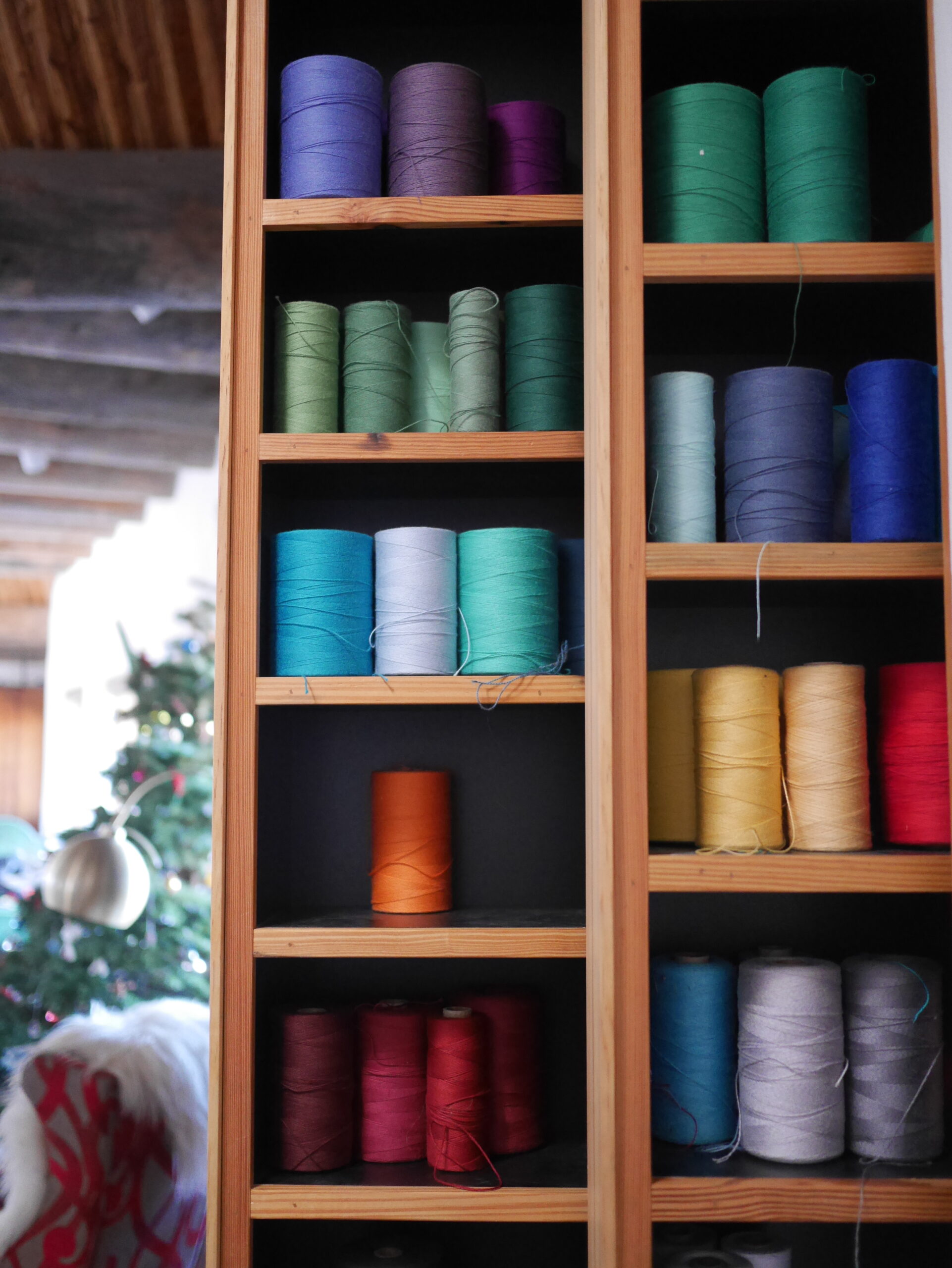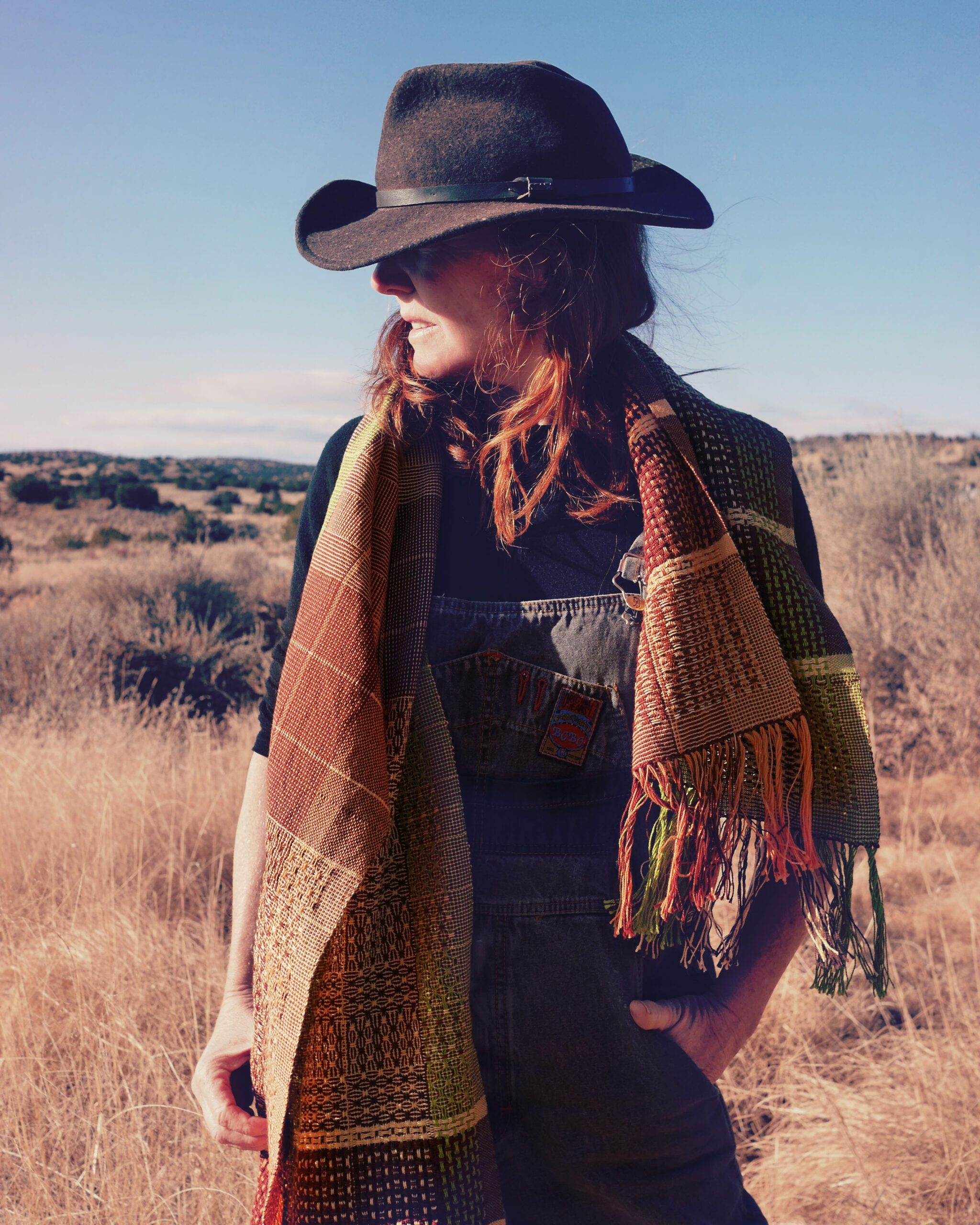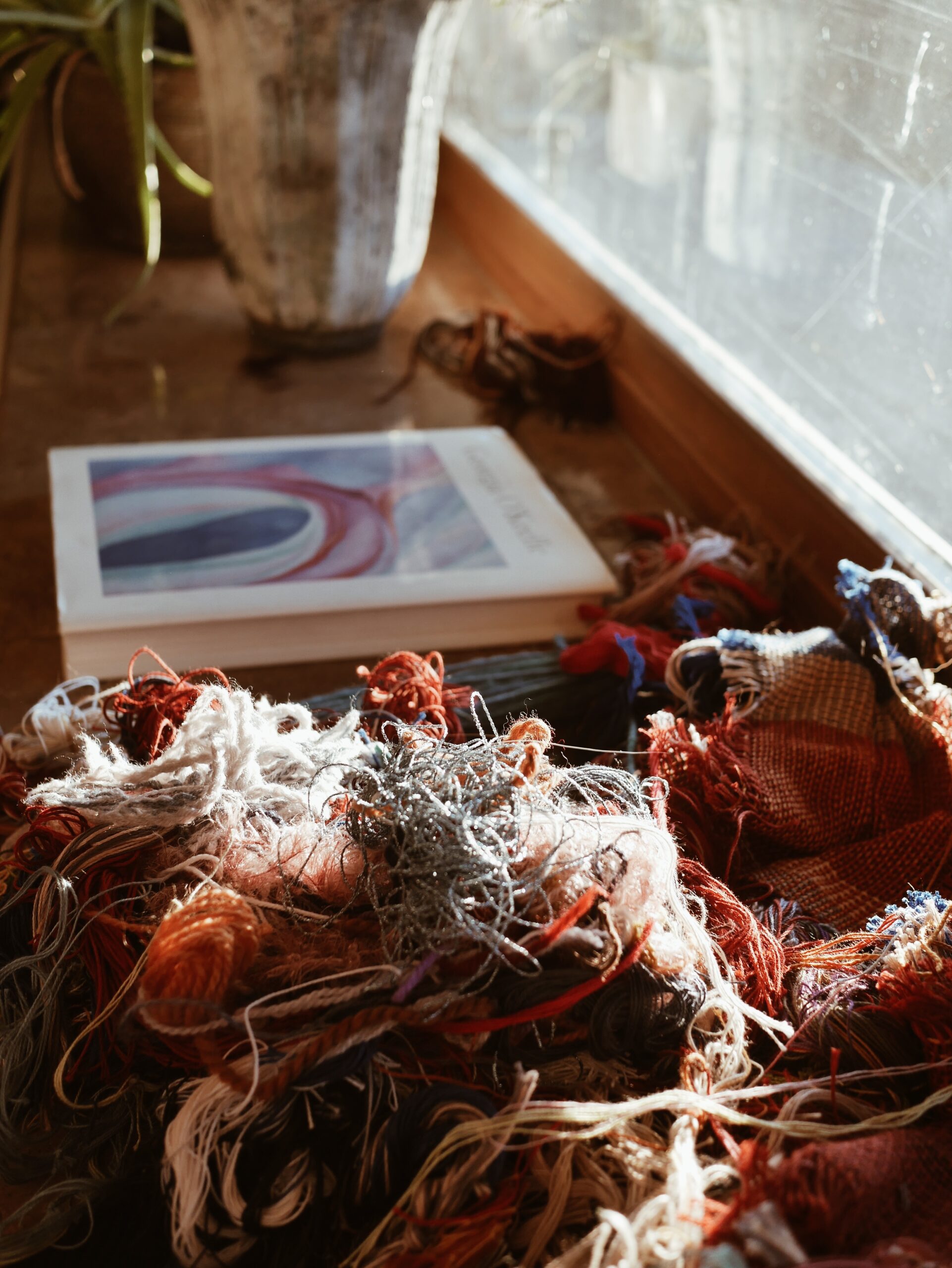
The Dyes
alchemy with plants and arthrods
 Juniper Lattice and Sandstone, detail,
Dec 8, 2022, cotton, lace detail
Juniper Lattice and Sandstone, detail,
Dec 8, 2022, cotton, lace detail Juniper Lattice and Sandstone,
Dec 8, 2022, cotton, lace and log cabin
Juniper Lattice and Sandstone,
Dec 8, 2022, cotton, lace and log cabinI make syrup from my prickly pear cactus to flavour my margaritas. I hold them with tongs and burn off the prickers, yet somehow, even gloved, I am impaled. This summer, however, I hope for an infestation of cochineal bugs so that I can harvest their colour. The scaly insect absorbs the fruit’s colour and transfers it into the dye pot to make pink, fuchsia or red, depending on the makeup of the water.
Prior to synthetic dyes, the bugs made the brightest of reds, which Mayas and Aztecs used in ritual, and the European conquerers coveted. The arthropod produced the red of the Vatican and the British military and Caravaggio’s The Incredulity of Saint Thomas. To corner the market, the Spanish kept the colour’s source a secret, prompting enemy nations to send spies to the Americas. Today, in the mass market, cochineal isn’t used for cloth, but it’s in your lipstick and food – and strict vegans avoid it.
In summer, too, the chamisa will bloom and its yellow flowers will bring the desert butterflies. It will make a splendid yellow, but for now I am working with weld.
The top of my grand piano is crowded with hand-dyed fabrics and yarns – logwood for purple and blue; madder for red to orange; marigold, a monkish ochre; eastern brazilwood, maroons, and of course cochineal. I am a novice dyer, but the piano says ‘it’s a start’. When at last the wind dies down outside, I will take my fabrics out to the portal to shift the colours in an iron bath. And when the bananas in my fridge turn brown, I will add them to a vat of indigo, as the women at Maiwa Textiles advise.




